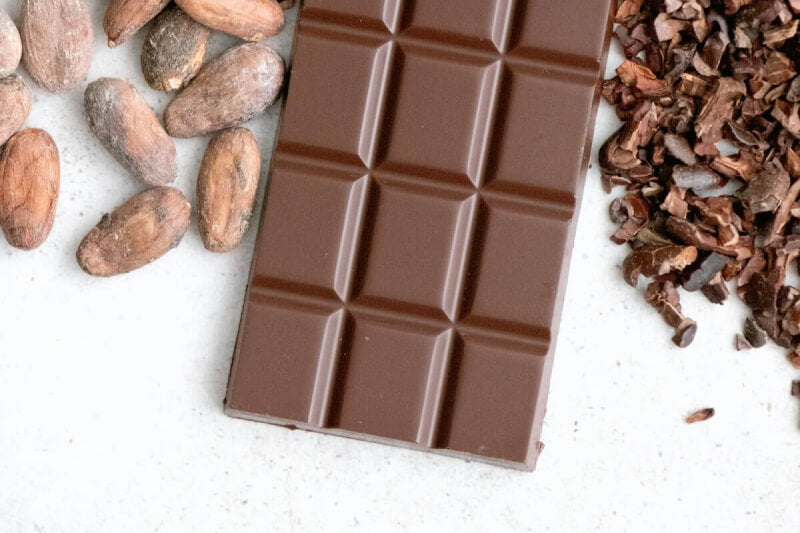Not all chocolate is created equal. Once you've tasted the difference between a high-quality bar and a mass-produced supermarket version, there's no going back. But how can you actually tell if a chocolate is really good? What makes it “high-quality” – and is it worth paying attention?
Don’t worry – you don’t need a chocolatier’s degree. With just a few simple tips, you’ll quickly learn to spot the difference between the real deal and a sugar-coated disappointment.
1. Less is more: Check the ingredients list
The ingredients tell you a lot. High-quality chocolate keeps it simple. Ideally, the list should start with:
- Cocoa mass or cocoa butter
- Sugar (but not at the top!)
- Possibly milk powder (in milk chocolate)
- Natural vanilla or vanilla extract
If you spot palm oil, artificial flavoring, emulsifiers, or a laundry list of additives, that’s usually a red flag. Of course, there are creative varieties out there – with nuts, dried fruits, caramel, cookies, and more – but the base should always be solid.
2. The shine matters
High-quality chocolate has a natural, silky shine – but don’t expect glitter. This subtle gloss comes from proper tempering: carefully heating and cooling the chocolate during production.
If a bar looks dull or has white streaks (known as “bloom”), it’s often due to poor storage or lower production standards. It’s still safe to eat – but the taste and texture won’t be as satisfying.
3. The snap test
It may sound strange, but good chocolate actually sounds good. Break off a piece – do you hear a clean, crisp “snap”? That’s a strong sign of well-tempered, high-quality chocolate. Cheaper chocolate tends to be soft or crumbly – not a good look (or sound).
4. Taste speaks for itself
Real chocolate doesn’t just taste sweet – it has character. High-quality chocolate reveals complex flavors: sometimes nutty, fruity, or slightly bitter. And it melts smoothly on your tongue, instead of sticking like a sugary paste.
Fun fact: Even well-known brands like Milka are stepping up their game with high-quality editions and unique flavors. So it’s worth revisiting the classics!
5. Cocoa content & origin
Generally, the higher the cocoa content, the more intense (and often healthier) the chocolate – especially with dark varieties. But don’t be fooled by percentages alone. The origin of the cocoa beans also matters. Single-origin chocolate – made from beans grown in one specific region – often brings out unique and subtle flavor notes.
Curious? At Sweetz United, you’ll find international brands that truly value quality and traceability – perfect for adventurous chocolate lovers.
6. What is “Bean-to-Bar” – and why does it matter?
“Bean-to-bar” means the entire chocolate-making process – from raw cocoa beans to finished bar – happens under one roof. The maker sources the beans directly, then roasts, processes, and refines them themselves. Why does that matter? Because it ensures full control over every step – which often results in higher quality, fairer practices, and more sustainable production.
If you’re serious about high-quality chocolate, keep an eye out for this term next time you shop.
7. The occasion makes the chocolate
Let’s be honest – chocolate tastes even better during the holidays. Whether it’s Christmas, Easter, or just a cozy Sunday afternoon, it’s always worth going for something a little special. Explore our carefully curated selection of Christmas treats or Easter sweets – many of them are beautifully packaged and full of character.
Conclusion: Great chocolate speaks to all your senses
Enjoying high-quality chocolate is about curiosity – and savoring the little things. Look at the ingredients, the shine, the snap, the aroma, and the melt-in-your-mouth feel. And then? Just enjoy.
Because chocolate isn’t just a treat. It’s comfort food, a thoughtful gift, a tiny piece of happiness you’re absolutely allowed to indulge in.
Feeling inspired? Discover a world of classic and creative chocolate at Sweetz United – perfect for gifting, sharing, or keeping all to yourself.

